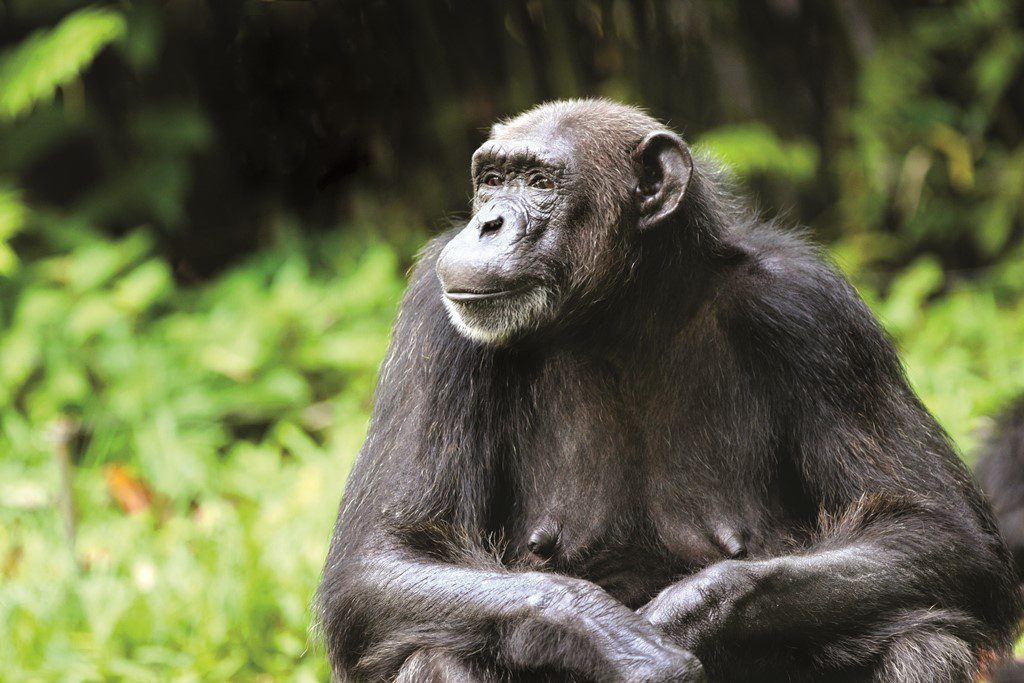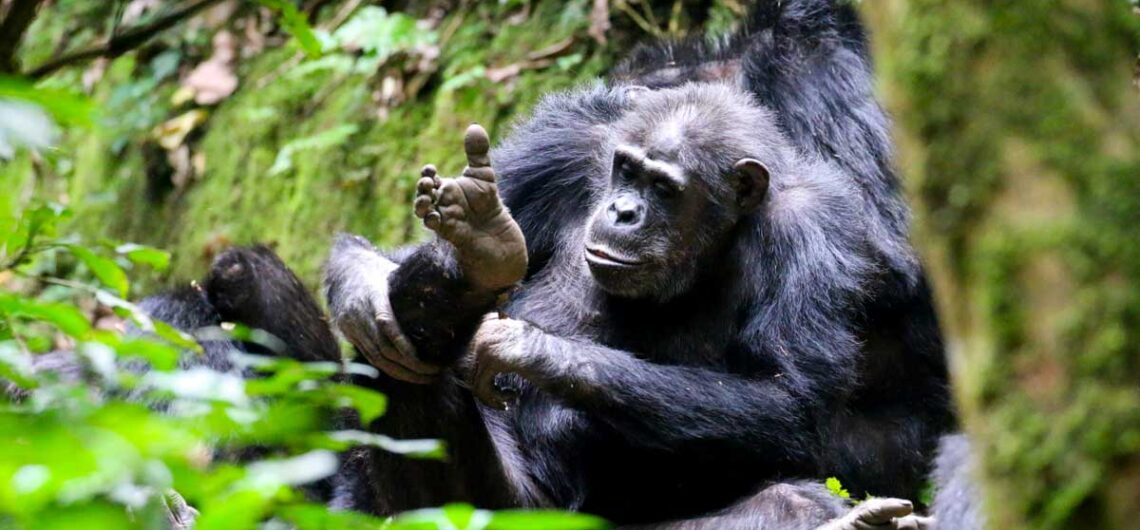Chimpanzee tracking in Nyungwe Forest, located in Rwanda, is a captivating adventure that offers a blend of natural beauty, excitement, and an intimate look into the lives of one of humanity’s closest relatives. This unique experience allows visitors to observe the complex social behaviors of chimpanzees and appreciate the remarkable biodiversity of one of Africa’s oldest rainforests. Here’s a comprehensive guide to chimpanzee tracking in Nyungwe Forest.
Introduction to Nyungwe Forest
Nyungwe Forest is an expansive montane rainforest covering approximately 1,020 square kilometers in southwestern Rwanda, near the border with Burundi. It is considered one of Africa’s oldest rainforests, with a history that spans millions of years, having survived the last ice age. This ancient ecosystem is renowned for its rich biodiversity, featuring over 1,000 plant species, 322 bird species, and 13 primate species, including chimpanzees, colobus monkeys, and golden monkeys.
The Chimpanzees of Nyungwe Forest
Chimpanzees, our closest living relatives, share around 98% of their DNA with humans, making their behavior and social dynamics particularly fascinating. Nyungwe Forest is home to two habituated chimpanzee groups. One group resides near the Cyamudongo area, a small forest fragment adjacent to Nyungwe, while the other is within the larger expanse of the forest itself.
- Group Dynamics: Chimpanzees live in communities that can range from 20 to over 100 individuals, though the groups in Nyungwe are typically smaller due to forest fragmentation and environmental pressures. The social structure is complex, with dominant males often leading the group and intricate bonds between individuals.
- Communication and Behavior: Chimpanzees communicate using vocalizations, facial expressions, and gestures. Observing their behavior in the wild offers a glimpse into their intelligence, emotional depth, and social bonds, such as grooming, playing, and conflict resolution.
The Chimpanzee Tracking Experience
Tracking chimpanzees in Nyungwe Forest offers an exhilarating experience that combines physical endurance with the thrill of discovery. Here’s what to expect on a typical chimpanzee tracking excursion.
Preparing for the Trek
Tracking excursions usually start early in the morning, as chimpanzees are more active in the cooler hours. After meeting at the designated park office, visitors are briefed on the day’s itinerary, the dos and don’ts of tracking, and safety protocols. The guides provide essential information on forest etiquette, as it’s crucial to maintain a respectful distance from the animals and avoid behaviors that may disturb them.
The Trek Through Nyungwe Forest
The terrain of Nyungwe is rugged, with dense vegetation, steep slopes, and occasional water crossings. Visitors should be physically prepared, as the tracking can take anywhere from 2 to 6 hours, depending on the location of the chimpanzee groups and their movements. The forest is often shrouded in mist, giving it an enchanting, almost mystical atmosphere.
- Scenic Beauty: As you trek through Nyungwe, you’ll experience a variety of landscapes, including bamboo forests, waterfalls, and lush undergrowth. The forest canopy is alive with the sounds of birds, insects, and other primates, creating a rich soundscape that enhances the sense of immersion in nature.
- Wildlife Encounters: Aside from chimpanzees, visitors may encounter other wildlife, such as black-and-white colobus monkeys, blue monkeys, and a wide variety of bird species. The forest is a birder’s paradise, with endemic species such as the Albertine Rift endemic red-collared mountain babbler.
The Chimpanzee Encounter
The moment of encountering a group of chimpanzees is a highlight of the trek. Visitors can observe them up close as they interact, forage for food, and engage in grooming. Chimpanzees in Nyungwe often spend time on the forest floor, making it easier for trackers to spot them, although they may occasionally move into the trees.
- Ethical Viewing: Guides are vigilant in maintaining a safe distance (usually around 10 meters) to protect both the chimpanzees and visitors. The time spent observing the chimpanzees is typically limited to one hour to minimize human impact on their natural behavior.

Conservation Efforts in Nyungwe
Nyungwe Forest is a national park, and significant efforts are made to protect its biodiversity. Conservation initiatives aim to combat deforestation, poaching, and the impact of human encroachment. Tracking fees contribute to these conservation efforts and the local economy, as a portion of the revenue supports park operations and community development.
Importance of Habitat Conservation
Chimpanzees in Nyungwe are threatened by habitat loss due to agricultural expansion and logging. Conservation efforts focus on preserving the forest and reforestation projects in areas where forest cover has been lost. These efforts help to protect not only the chimpanzees but also the entire ecosystem.
Community Involvement
Local communities play a crucial role in the conservation of Nyungwe Forest. The park has programs that engage nearby communities in conservation activities and provide alternative livelihood opportunities, such as eco-tourism, handicrafts, and guiding services. This involvement fosters a sense of ownership and responsibility toward protecting the forest.
Practical Information for Visitors
When to Visit
The best time for chimpanzee tracking in Nyungwe is during the dry seasons, from June to September and December to February. The trails are less muddy, and tracking is generally easier during these months. However, Nyungwe’s climate is relatively temperate year-round, with frequent rain showers, so visitors should be prepared for varying weather conditions.
Permits and Costs
A permit is required for chimpanzee tracking in Nyungwe, which is issued by the Rwanda Development Board (RDB). As of recent information, the permit costs around $90 for foreign visitors. Permits can be booked in advance through the RDB or registered tour operators, especially during peak seasons when demand is high.
What to Bring
A successful and comfortable tracking experience requires proper preparation. Here’s a recommended checklist:
- Hiking Gear: Sturdy, waterproof hiking boots are essential due to the slippery and uneven terrain. Long-sleeved shirts, long pants, and a waterproof jacket will help protect against thorns, mud, and sudden rain.
- Essentials: A small backpack, water, snacks, sunscreen, insect repellent, and a hat are necessary. Tracking can be physically demanding, so staying hydrated is crucial.
- Photography: While photography is permitted, flash photography is not allowed to avoid disturbing the chimpanzees. Bringing a good zoom lens is recommended, as it allows for detailed photos from a safe distance.
Benefits of Chimpanzee Tracking for Visitors and Locals
1. Educational Value
Chimpanzee tracking offers an invaluable educational experience. Observing chimpanzees in their natural habitat provides insight into their social structures, intelligence, and the importance of preserving such species for biodiversity.
2. Economic Impact
Tourism is a significant contributor to Rwanda’s economy. Chimpanzee tracking permits and associated tourism revenue support local communities, park operations, and conservation efforts. Many locals are employed as guides, rangers, or in related tourism services, promoting sustainable livelihoods.
3. Cultural Exchange
The experience also fosters cultural exchange between visitors and locals. Learning about local customs, traditional practices, and the community’s relationship with the forest enhances the experience, promoting mutual respect and understanding.
Challenges Facing Chimpanzee Conservation in Nyungwe
While conservation efforts in Nyungwe are robust, challenges remain. Habitat fragmentation, human-wildlife conflict, and the risk of disease transmission between humans and chimpanzees pose ongoing threats. Researchers and conservationists continually work to address these issues, ensuring the forest remains a safe haven for chimpanzees and other wildlife.
1. Disease Transmission
Chimpanzees are highly susceptible to human diseases, which can spread easily during close interactions. Park authorities have strict guidelines to prevent illness transmission, including distance regulations, time limits on visits, and restrictions for visitors showing signs of illness.
2. Climate Change
Climate change has led to unpredictable weather patterns, which affect Nyungwe’s flora and fauna. Shifts in rainfall and temperature can impact food availability for chimpanzees and the ecosystem’s overall health. Climate resilience is becoming a critical aspect of conservation planning for the forest.
Conclusion
Chimpanzee tracking in Nyungwe Forest offers a memorable journey into the heart of Rwanda’s natural heritage. It’s more than just a wildlife encounter; it’s a transformative experience that connects people with nature and underscores the importance of protecting the world’s precious ecosystems. By participating in responsible tourism, visitors contribute to the preservation of Nyungwe Forest and the wellbeing of its inhabitants, ensuring future generations can continue to experience the magic of chimpanzee tracking in one of Africa’s most enchanting forests.


Comments